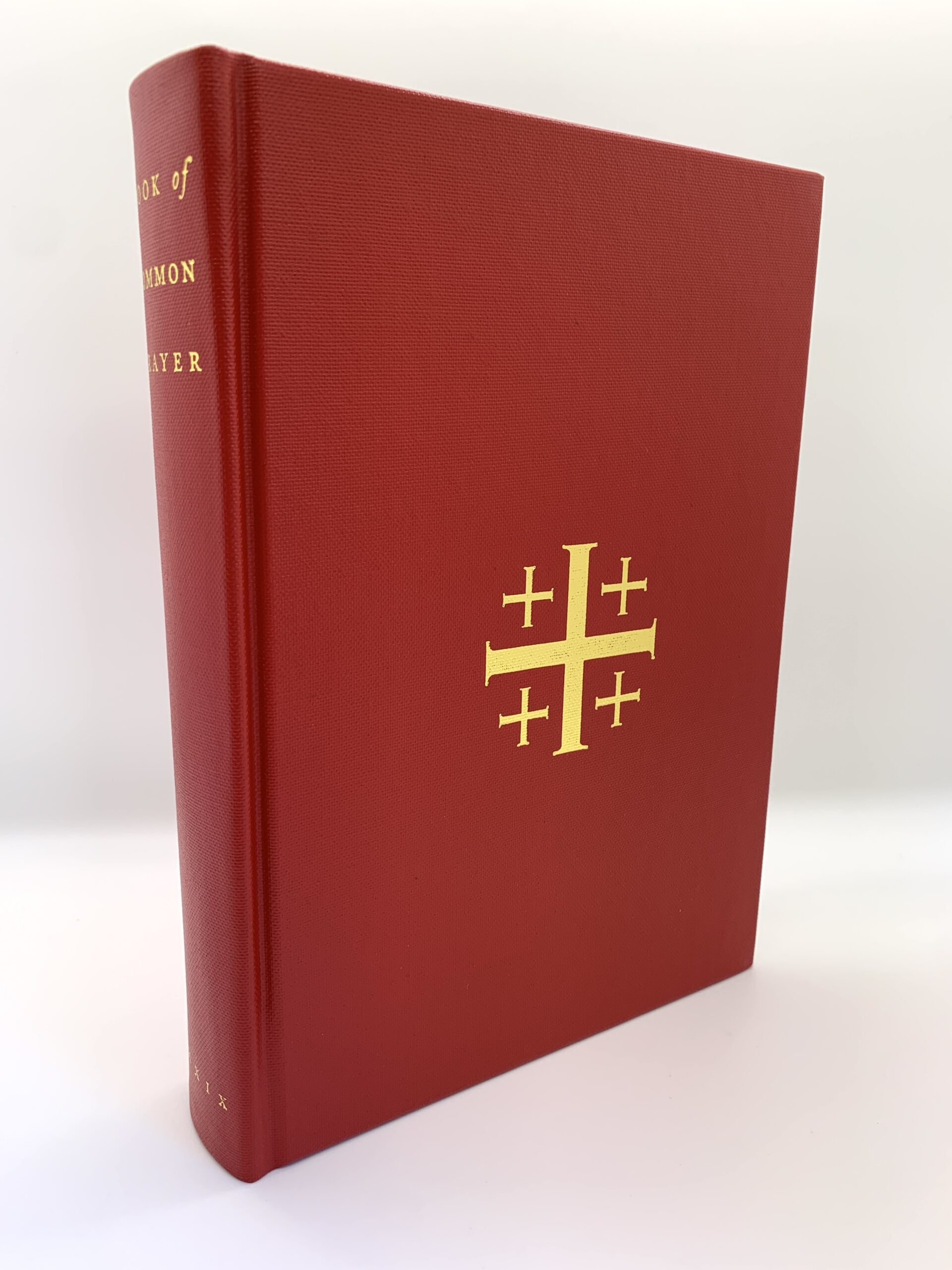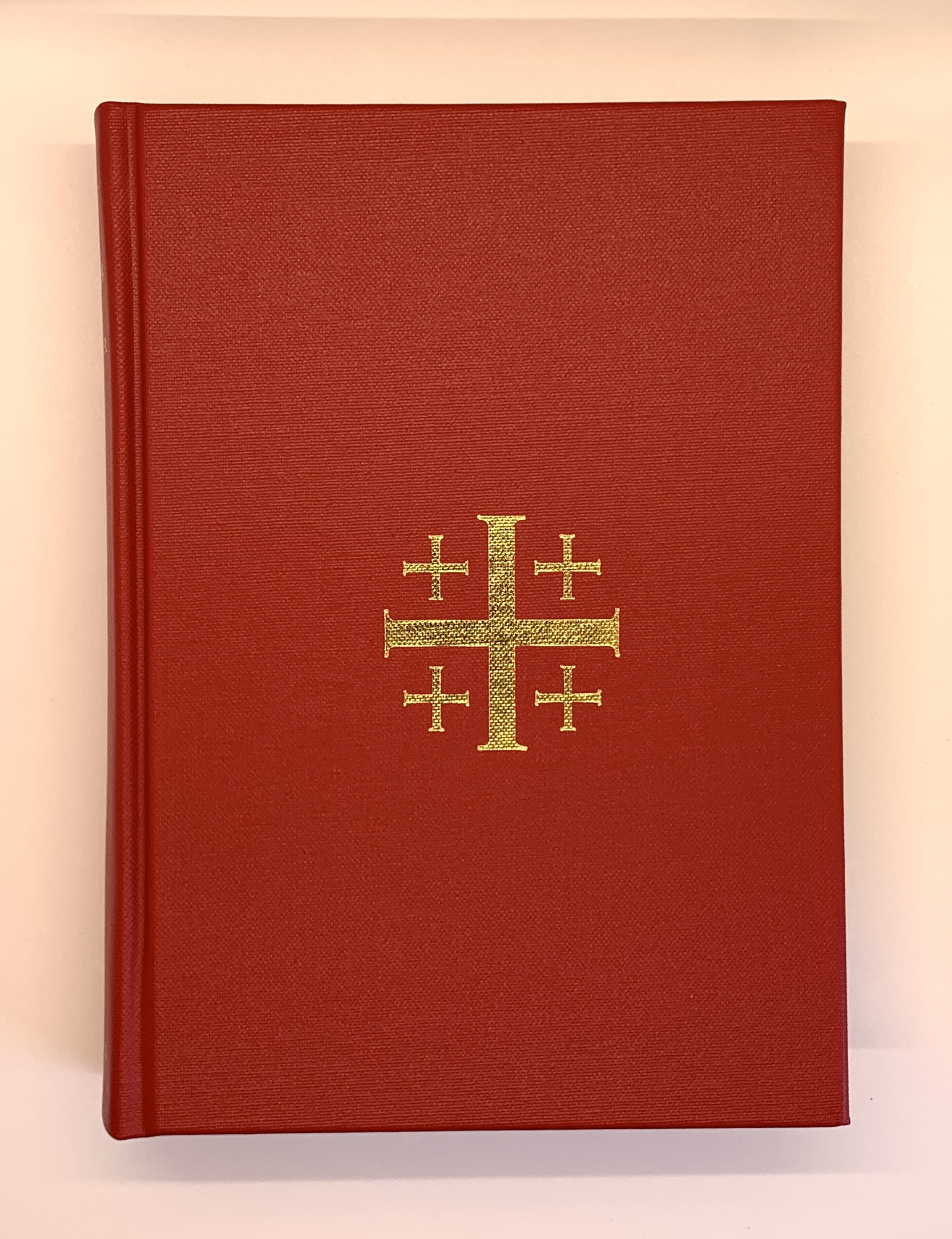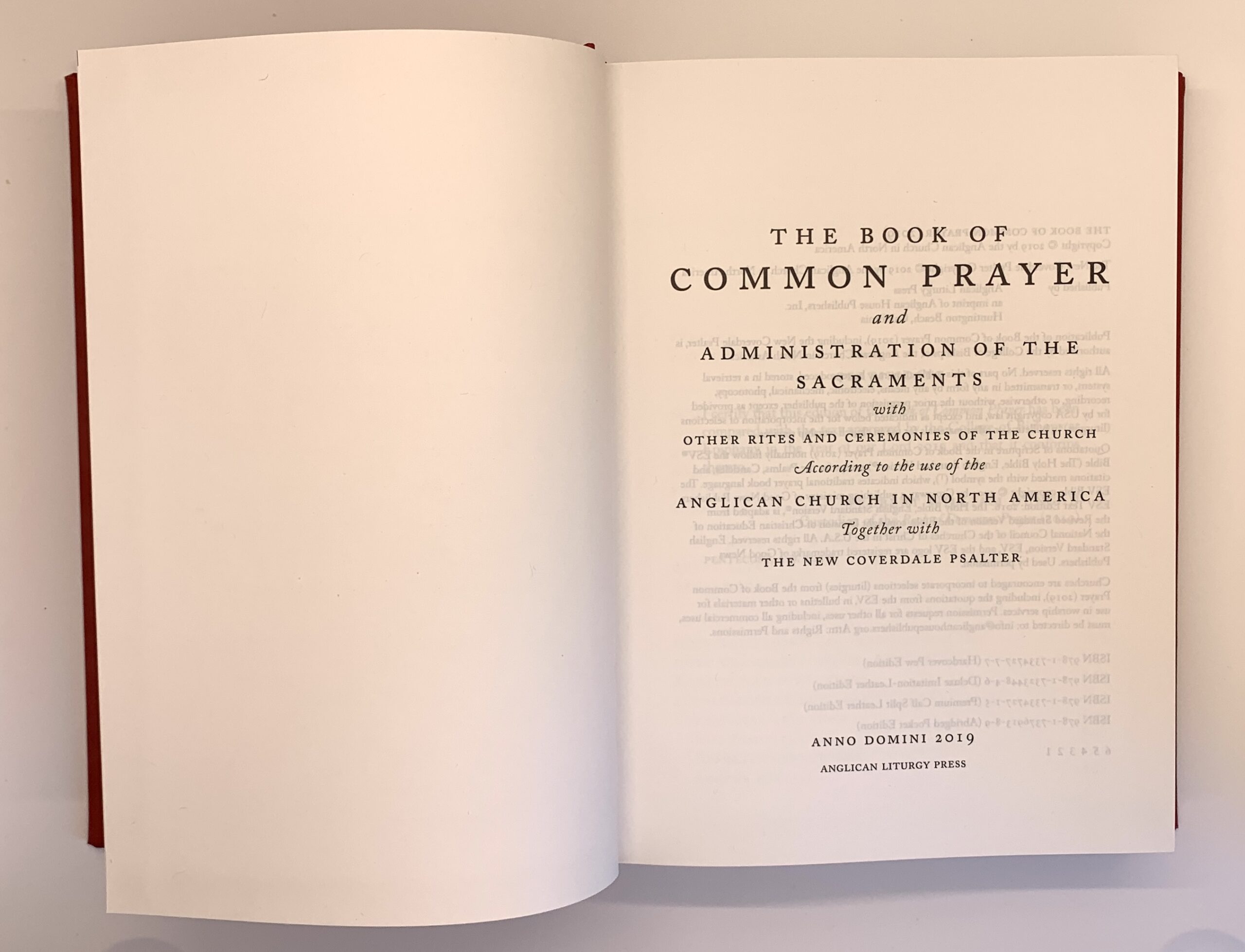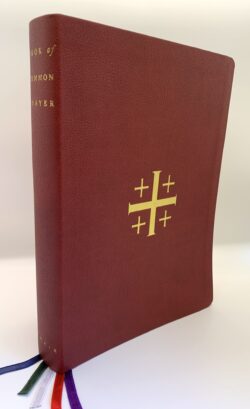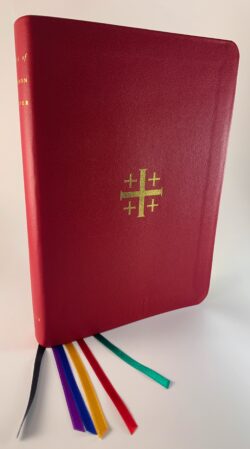Description
After six years of the Church’s use of draft liturgies (Texts For Common Prayer 2013 and Texts For Common Prayer II 2018), and the receipt of extensive comments from all across the Church, and significant revisions and refinements, in January 2019 the College of Bishops approved the last wave of liturgies in their final form. One of the documents then approved was the Preface, which includes this helpful introduction to worship in the prayer book tradition:
At the beginning of the 21st century, global reassessment of the Book of Common Prayer of 1662 as “the standard for doctrine, discipline and worship” shapes the present volume, now presented on the bedrock of its predecessors. Among the timeless treasures offered in this Prayer Book is the Coverdale Psalter of 1535 (employed with every Prayer Book from the mid-16th to the mid-20th centuries), renewed for contemporary use through efforts that included the labors of 20th century Anglicans T.S. Eliot and C.S. Lewis, and brought to final form here. The Book of Common Prayer (2019) is indisputably true to Cranmer’s originating vision of a form of prayers and praises that is thoroughly Biblical, catholic in the manner of the early centuries, highly participatory in delivery, peculiarly Anglican and English in its roots, culturally adaptive and missional in a most remarkable way, easily accessible to the people.
The Book of Common Prayer, from the first edition of 1549, has been the hallmark of a Christian way of worship and believing that is both catholic and reformed, continuous yet always renewing. However, the Book of Common Prayer 1979 in the United States and Prayer Books that appeared in Anglican Provinces from Kenya to Singapore were often more revolutionary than evolutionary. Eucharistic prayers in particular often bore little resemblance to what had for centuries been the Anglican norm.
The Book of Common Prayer 2019 is the product of a new era of reform and restoration that have created the Anglican Church in North America. Like the Jerusalem Declaration of 2008, that located itself within the historic confines of what is authentically the Christian Faith and the Anglican patrimony, the Book of Common Prayer 2019 is offered to the same end.
Undoubtedly Thomas Cranmer’s (the Prayer Book’s author) most dynamic achievement was his replacement of the numerous books of the Latin Liturgy with a carefully compiled Book of Common Prayer. This was a Prayer Book in the vernacular, one that brilliantly maintained the traditional patterns of worship, yet which sought to purge away from worship all that was “contrary to Holy Scripture or to the ordering of the Primitive Church.” The Book of Common Prayer, from the first edition of 1549, became the hallmark of a Christian way of worship and believing that was both catholic and reformed, continuous yet always renewing.
During the English Civil Wars of the seventeenth century (1649-1660) Church of England and the liturgy and authority that attended it were dissolved. The Book of Common Prayer, authorized by King and Church in 1662, restored the balance of a Church that sought to be both Catholic and Reformed. The Wesleyan movement of the 18th century, as well as adaptations necessary for the first Anglicans independent of the British Crown, re-shaped the Prayer Book tradition, foreshadowing the impact of the East African Revival and the end of the British Empire two centuries later. The evangelical and anglo-catholic movements of the 19th century also profoundly affected Anglican self-understanding and worship in different, often seemingly contradictory, ways – yet these movements worshipped using the same Book of Common Prayer. In addition to “catholic and reformed” in its substance, some would come to describe what had emerged in practice by the 21st century as “three streams in one river.” For nearly five centuries Cranmer’s Prayer Book idea had endured to shape what has emerged as a global Anglican Church that is missional and adaptive as in its earliest centuries, authoritatively Scriptural and creedal as in its greatest season of reform, and evangelical, catholic and pentecostal in its apology and its worship as now globally manifest.
The liturgical movement of the 20th century and ecumenical rapproachment in the second half of that century had an immense impact on the Prayer Book tradition. The Book of Common Prayer 1979 in the United States and Prayer Books that appeared in Anglican Provinces from Kenya to Singapore were often more revolutionary than evolutionary. Eucharistic prayers in particular often bore little resemblance to what had for centuries been the Anglican norm. Baptismal theology, particularly in North America, also came perilously close to a gospel of individual affirmation rather than of personal transformation and sanctification.
The Book of Common Prayer 2019 is the product of a new era of reform and restoration that have created the Anglican Church in North America. Like the Jerusalem Declaration of 2008, that located itself within the historic confines of what is authentically the Christian Faith and the Anglican patrimony, the Book of Common Prayer 2019 is offered to the same end.

